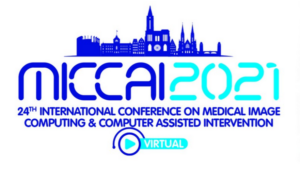Virtual Secondment at the UiS
From April until July 2021, Arne Schmidt (ESR8) completed his secondment at the University of Stavanger under the supervision of Trygve Eftestøl and Kjersti Engan. Due to the Covid restrictions, the secondment was virtual – but this did not prevent us from having a fruitful and
close collaboration! The main topic of the secondment was the preprocessing of WSIs for the automatic detection of cancer. Together with the Deliverable D3.1 “Preprocessing and Standardization Protocol” of the CLARIFY project, the main findings will be published in a research article that is currently written by Neel Kanwal (UiS, ESR4), Fernando Pérez Bueno (UGR) and Arne Schmidt (ESR8, UGR).
New Attention Mechanism for Multiple Instance Learning
One important research focus that ESR8 is currently working on is Multiple Instance Learning (MIL) with attention-based methods (see f.e. https://arxiv.org/abs/1802.04712). Our idea is to use develop a new model provides a final prediction that is probabilistic. As this project is still in an early stage, further details will be explained and published in the next months.
MICCAI 2021 – Personal Highlights

The 24th International Conference on Medical Image Computing and Computer Assisted Intervention (MICCAI) was held as a virtual event from September 27th to October 1st 2021. One big focus of the conference is digital pathology and it hosts the 3rd Workshop on Computational Pathology (COMPAY).
For Arne Schmidt (ESR8), this was a great opportunity to get know the latest research – and to present the work “Combining Attention-based Multiple Instance Learning and Gaussian Processes for CT Hemorrhage Detection” (Yunan Wu, Arne Schmidt, Enrique Hernández-Sánchez, Rafael Molina, Aggelos K. Katsaggelos), a result of a collaboration between the Universidad de Granada and the Northwestern University.
Here are some personal highlights from the MICCAI conference:
COMPAY (3rd Workshop on Computational Pathology):
- A very active research group in digital pathology is the Mahmood Lab Harvard Medical School (https://faisal.ai/). They presented several interesting articles about deep learning, for example about multiple instance learning with WSIs or the fusion of histopathology and genomic features:
- Data-efficient and weakly supervised computational pathology on whole-slide images (Ming Y. Lu, Drew F. K. Williamson, Tiffany Y. Chen, Richard J. Chen, Matteo Barbieri & Faisal Mahmood) https://www.nature.com/articles/s41551-020-00682-w
- Pathomic Fusion: An Integrated Framework for Fusing Histopathology and Genomic Features for Cancer Diagnosis and Prognosis (Richard J. Chen, Ming Y. Lu, Jingwen Wang, Drew F. K. Williamson, Scott J. Rodig, Neal I. Lindeman, Faisal Mahmood) https://ieeexplore.ieee.org/stamp/stamp.jsp?arnumber=9186053
- Many python libraries and tools were presented that can help to handle Whole Slide Image (WSI) data:
- HistoCartography: Python library to automatically build a graph between cells and group them and provide a final segmentation.
- Stainlib: Python library for augmentation and normalization of H&E images.
- HistoQC: Tool with user interface to analyze WSI databases for quality control and artifact detection.
- Multi_Scale_Tools: Python library that includes a patch-extractor and a CNN for classification and segmentation considering multiple scales of magnification.
- PatchSorter: Tool with user interface to annotate histopathlogical image patches.
My favourite startups from the MICCAI Startup Village:
- Hevi AI – Software for stroke detection based on CT scans for faster stroke triage decisions.
- Niramai – Affordable device to detect breast cancer before lump is felt with thermal imaging, processed by AI.
- Third Eye Intelligence – Early detection of organ failures in ICUs by AI warning system based on live data analysis.
Some Interesting Articles:
- How a Bayesian treatment of the feature distribution can prevent the model from so-called catastrophic forgetting in a continuous learning setting for skin cancer:
- Continual Learning with Bayesian Model Based on a Fixed Pre-trained Feature Extractor (Yang Yang, Zhiying Cui, Junjie Xu, Changhong Zhong, Ruixuan Wang, Wei-Shi Zheng) https://link.springer.com/chapter/10.1007%2F978-3-030-87240-3_38
- A new method to detect prostate cancer from ultrasound images with coarse labels – this can prevent patients from extracting a biopsy which can cause side-effects:
- Training Deep Networks for Prostate Cancer Diagnosis Using Coarse Histopathological Labels (Golara Javadi, Samareh Samadi, Sharareh Bayat, Samira Sojoudi, Antonio Hurtado, Silvia Chang, Peter Black, Parvin Mousavi, Purang Abolmaesumi) https://link.springer.com/chapter/10.1007%2F978-3-030-87237-3_65
- Deep learning models are able to predict the severeness of COVID-19 based on X-ray images. This proposed method is able to highlight the most important regions that led to the prediction:
- Explaining COVID-19 and Thoracic Pathology Model Predictions by Identifying Informative Input Features (Ashkan Khakzar, Yang Zhang, Wejdene Mansour, Yuezhi Cai, Yawei Li, Yucheng Zhang, Seong Tae Kim, Nassir Navab) https://link.springer.com/chapter/10.1007%2F978-3-030-87199-4_37
Arne Schmidt – ESR8

